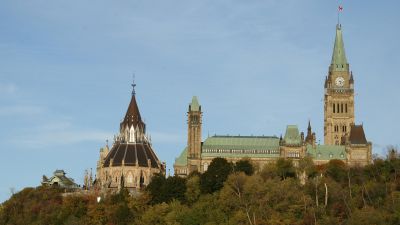We leave for Copenhagen today. With the meeting so close, we've had lots of calls from journalists who are getting up to speed on the negotiations. One of the questions that keeps coming up is "Does Canada have the same targets as the U.S.?" We cover that question in our Copenhagen backgrounder, but I wanted to pull out some of the highlights here.
On paper, Canada and the U.S. do have nearly the same 2020 target - about 3% below 1990 in both cases. But there are a few reasons why they're actually quite different commitments:
- Although the government announced it over two years ago, Canada's target is not expressed in legislation anywhere.
- Independent analysis - including ours- consistently finds that Canada will need much stronger policies than it has proposed to date to meet its target. So far, the government has never published a plan that adds up to reaching the target.

- The single most important policy we need to cut Canada's emissions is a price on emissions through a cap-and-trade system. This fall, the government decided to delay announcing a cap-and-trade system for Canada - again.
- In the U.S., targets are just one part of comprehensive climate and energy legislation package. The U.S. approach to meeting their target includes a cap-and-trade system, investments in renewable energy and efficiency, performance standards, and other measures.
- The U.S. bill passed in the House of Representatives in June mandates investments in reducing emissions from deforestation in tropical countries. Those reductions would cut U.S. emissions over and above the targets in the bill. According to an estimate from a very credible U.S. think tank, the extra investments in reduced deforestation could cut net U.S. emissions to 16 to 22% below 1990 in 2020 - far ahead of Canada's 3% reduction. (The U.S. Senate is still working on its version of that climate bill.
- While Canada has a 2020 and a 2050 target, the U.S. bill sets a 2020, 2030, 2040 and 2050 target. Their 2050 target is much stronger than Canada's.
Relative to the science, both countries should be more ambitious. But at least one of them sounds like they mean their target when they say it. You're probably not surprised to hear that it's not Canada.
Clare Demerse was the director of federal policy at the Pembina Institute until 2014.



